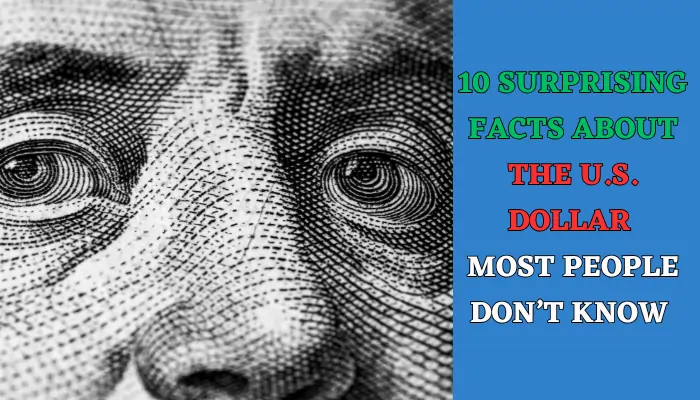Introduction
The U.S. dollar ($) is more than just paper money — it’s a symbol of economic power, trust, and history. As the world’s most used currency, the dollar affects everyday life globally. But despite its daily use, most people don’t know how deep and mysterious the dollar really is.
In this article, we’ll uncover 10 surprising facts about the U.S. dollar that almost no one pays attention to — yet they reveal how the global economy works and why the dollar holds such a strong position in the financial world.
1. 💰 The Dollar Is Not Backed by Gold
Many people still believe the U.S. dollar is backed by gold. It’s not.
In 1971, the U.S. officially ended the gold standard, meaning the dollar became a fiat currency — its value is backed solely by government trust, not precious metals. Today, the dollar’s strength depends on economic confidence, not gold reserves.
2. 🌎 It’s the World’s Reserve Currency
Over 60% of global foreign exchange reserves are held in U.S. dollars. This gives the U.S. unmatched global economic influence. The dollar is used for international trade, especially oil — a system known as the petrodollar. As long as global trade depends on the dollar, demand stays high.
3. 💻 Most Dollars Are Digital
Here’s a mind-blowing fact: only about 10% of all U.S. dollars exist as cash. The rest are digital — stored in bank accounts, credit systems, and online transactions. The money you see in your bank app isn’t physical; it’s part of the digital money supply.
4. 🕵️♂️ Secret Security Features on Every Bill
Every U.S. bill includes hidden features to prevent counterfeiting, including:
- Microprinting (tiny text)
- Color-shifting ink
- UV-reactive threads
- Watermarks
These details are easy to miss but are critical for protecting the dollar’s integrity.
5. 🧵 Dollars Are Not Made of Paper
Unlike regular paper, U.S. dollars are printed on a blend of 75% cotton and 25% linen. That’s why bills feel soft and durable. This unique material extends the life of a bill and helps prevent counterfeiting.
6. 🔍 Hidden Symbols and Meanings
The $1 bill is packed with symbolism:
- A pyramid with 13 steps for the original colonies
- An eye of providence, suggesting divine guidance
- Latin phrases like “Annuit Coeptis” (“He approves our undertakings”) and “Novus Ordo Seclorum” (“A new order of the ages”)
These symbols connect U.S. currency to deeper political and philosophical ideals.
7. 📉 Inflation Has Shrunk the Dollar’s Power
The dollar you hold today is worth far less than it was decades ago. For example:
- $1 in 1950 = about $10 today
- That’s over 87% loss of value due to inflation
Understanding this helps explain why saving in cash alone isn’t enough to preserve wealth over time.
8. 💵 The $2 Bill Still Exists (Yes, Really!)
Most people think the $2 bill is rare or discontinued. It’s not. The U.S. Treasury still prints them — they’re just used less often. Some even collect them thinking they’re valuable, but in truth, they’re still legal tender and spendable anywhere in the U.S.
9. 🔢 Every Dollar Has a Unique Serial Number
Look closely at a dollar bill and you’ll find a serial number and a letter code (A–L) indicating which of the 12 Federal Reserve Banks issued it. This makes every bill traceable and helps prevent fraud or duplication.
10. 🚫 Businesses Can Refuse Cash
Despite what most people think, businesses are not required by law to accept cash. “Legal tender” applies mainly to debts, not purchases. Some stores are now going cashless, relying solely on digital payments — especially after COVID-19 accelerated the trend.
Final Thoughts
The U.S. dollar is more than just a tool for buying things — it’s a reflection of economic systems, political history, and global trust. By understanding these hidden facts, you get a clearer picture of how money truly works.
So the next time you spend a dollar, remember: it holds more secrets than you think.
Frequently Asked Questions (FAQs)
No. The dollar hasn’t been backed by gold since 1971. It is now a fiat currency.
Only around 10%. Most money exists in digital form.
Not usually. Most are worth exactly $2 unless they are old, rare, or in mint condition.
Yes. There is no federal law requiring private businesses to accept cash.


